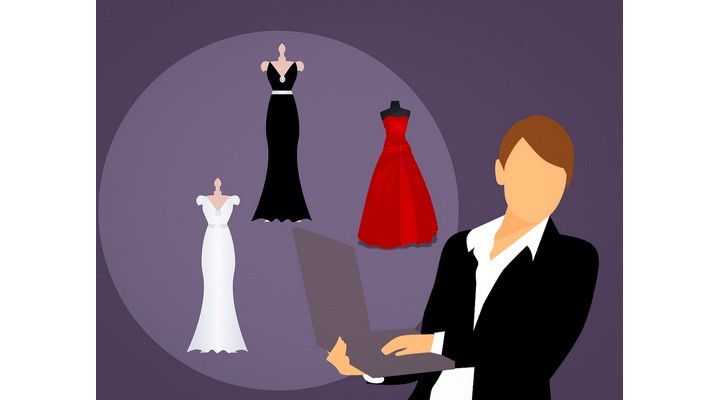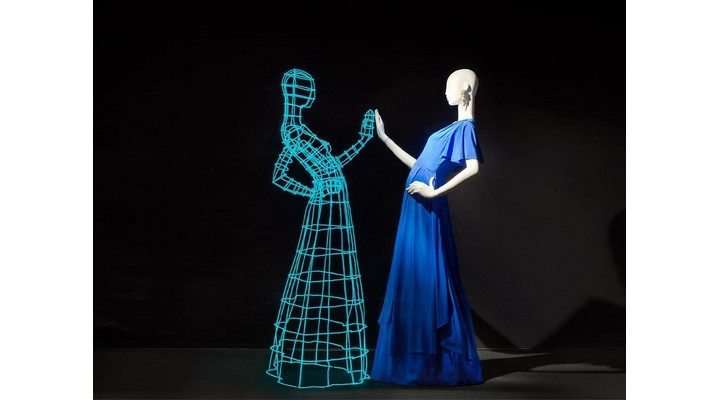
The twin industries of fashion and technology are interconnected in more ways today than ever before. We all know of common technology processes being used by fashion retailers and manufacturers worldwide: Corel draw and illustrator to create designs to details like inserting the scanned fabric and trims like buttons labels zip etc to create a tech pack, CAD (computer-aided design) to auto-grade the pattern in different sizes, digital printing, computerised embroidery, blockchain to transparently trace the supply chain,3D printing being one of the newest which enables customisation is less labour intensive as printing on demand saves 30% wastage so it’s sustainable.
But The global outbreak of the COVID-19 pandemic has brought the retail industry to a grinding halt; with every brand is now looking to technology as a saviour of its business! Social distancing will be the ‘new normal’.
Does this mean that the ‘touch & feel’ experience that the retail stores have provided all along will now be a distant memory? Well, it is yet too early to analyse the impact this crisis will have on consumer behaviour; however, there is little doubt that going forward technology will play a key role in revenue generation for the fashion industry.

The holy grail of online shopping; the question that bothers every consumer is “WILL IT FIT ME?” once ordered.
According to studies, between twenty to forty per cent of all clothing purchased online is returned, often due to issues with FIT, costing fashion e-tailers millions. A bevvy of tech start-ups is aiming to solve the problem. In recent years, fashion and apparel have become the fastest-growing e-commerce category and the second largest after consumer electronics, but fit-related returns cost fashion e-tailers millions, not only in terms of lost revenue but also because of the expense associated with to and fro shipping, processing them and some of those items may now be worn and not eligible for resale.
Few names such as TrueFit, which works with Macy’s and Nordstrom, like Metail and Fits.me are offering fit guidance solutions that better match consumers with correctly fitting garments they developed digital fitting rooms that use virtual mannequins to mimic a shopper’s dimensions and display what a certain garment might look like when worn. Still, others rely on shoppers to input their measurements, matching this data with specific garments.
Yet, the challenges remain since returns still account for a large revenue loss to the retailer. Apps like “The Dressing Room” that uses Virtual reality that allows customers to try clothes on their avatar – of their size to help decide before making a purchase decision.
PARIS Fashion Week did an augmented reality show in 2017 conjoining the use of smartphones.
In London, Tissot allows shoppers to try on their luxury watches virtually at Selfridges and Harrods’ windows. Christian Dior developed VR glasses called “Dior Eyes” that give visitors a sneak peek behind the scenes at their ready-to-wear fashion shows. In New York City, the flagship Rebecca Minkoff store features a smart video wall that suggests new styles when people pass by or enter.
Forecast websites & Styling Apps are also using artificial intelligence
Ratatouille an artificial intelligence-based software used by Myntra that’s used insights of shopping patterns so far and tells what designs will sell or be best sellers so quantities on those styles and their positioning can be planned accordingly
Luxury brands have also been following innovative sportswear producers in creating technology-heavy, functionality-focused fabrics. Ralph Lauren’s uniforms for the US Winter Olympic and Paralympic teams feature a heating system made from electronic printed conductive inks, which was printed in carbon and silver ink in the interior of the athletes’ jackets.
While we can’t necessarily predict what the fashion industry will look like in the future, one thing is clear: it will only become more complex. Now is as good a time as ever to prioritise technology investments and, as an industry collective, we should be aiming to establish the kinds of standards and processes, which will enable us to collaborate more effectively in the future.

